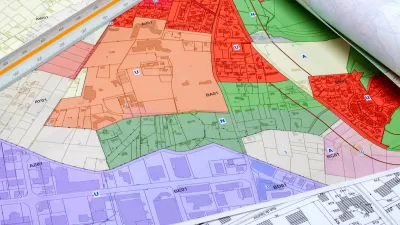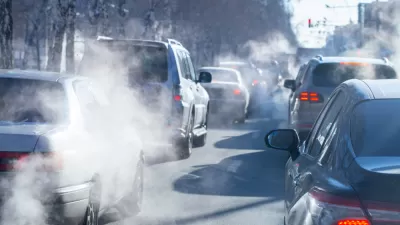New research analyzing carbon emissions throughout the life cycle of buildings shows that high-rises create more carbon emissions than dense, low-rise developments.

Researchers Ruth Saint and Francesco Pomponi shares news of their new study asserting that dense, low-rise buildings are better for the environment than high-rises. Despite their ability to drastically increase density in urban areas, high-rise buildings, according to the study, create more carbon emissions down the line. This is largely due to what Saint calls "embodied" carbon emissions, "all the hidden, behind-the-scenes carbon produced during the extraction, production, transport and manufacture of raw materials used to construct a building, plus any produced during maintenance, refurbishment, demolition or replacement." This overlooked aspect of a development's overall carbon footprint, experts argue, must be emphasized in order to reduce emissions in cities.
Our findings show that high-density low-rise cities, such as Paris, are more environmentally friendly than high-density high-rise cities, such as New York. Looking at the fixed population scenarios, when moving from a high-density low-rise to a high-density high-rise urban environment, the average increase in whole life-cycle carbon emissions is 142%.
With countries targeting aggressive emissions reduction goals, Saint argues that urban planners and developers must use this knowledge to advance more sustainable building practices that reduce the carbon footprint of cities while continuing to accommodate growing urban populations.
FULL STORY: Cities and climate change: why low-rise buildings are the future – not skyscrapers

Maui's Vacation Rental Debate Turns Ugly
Verbal attacks, misinformation campaigns and fistfights plague a high-stakes debate to convert thousands of vacation rentals into long-term housing.

Planetizen Federal Action Tracker
A weekly monitor of how Trump’s orders and actions are impacting planners and planning in America.

San Francisco Suspends Traffic Calming Amidst Record Deaths
Citing “a challenging fiscal landscape,” the city will cease the program on the heels of 42 traffic deaths, including 24 pedestrians.

Defunct Pittsburgh Power Plant to Become Residential Tower
A decommissioned steam heat plant will be redeveloped into almost 100 affordable housing units.

Trump Prompts Restructuring of Transportation Research Board in “Unprecedented Overreach”
The TRB has eliminated more than half of its committees including those focused on climate, equity, and cities.

Amtrak Rolls Out New Orleans to Alabama “Mardi Gras” Train
The new service will operate morning and evening departures between Mobile and New Orleans.
Urban Design for Planners 1: Software Tools
This six-course series explores essential urban design concepts using open source software and equips planners with the tools they need to participate fully in the urban design process.
Planning for Universal Design
Learn the tools for implementing Universal Design in planning regulations.
Heyer Gruel & Associates PA
JM Goldson LLC
Custer County Colorado
City of Camden Redevelopment Agency
City of Astoria
Transportation Research & Education Center (TREC) at Portland State University
Jefferson Parish Government
Camden Redevelopment Agency
City of Claremont





























